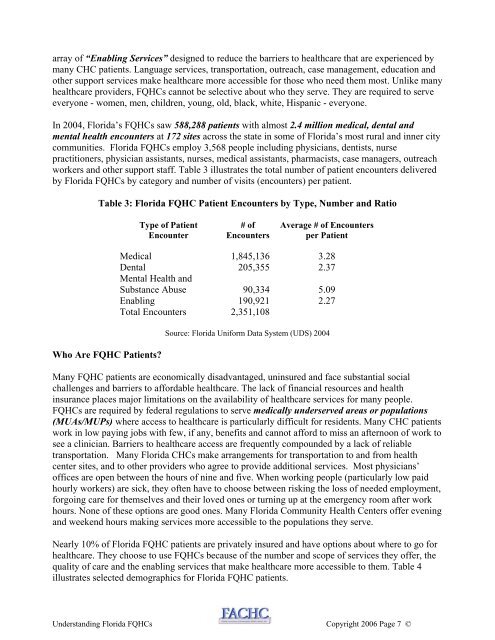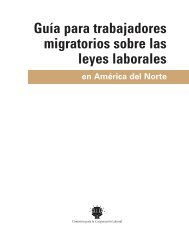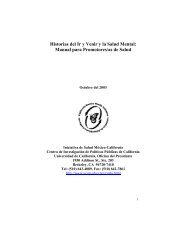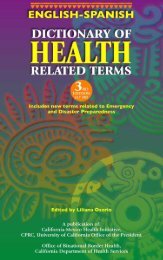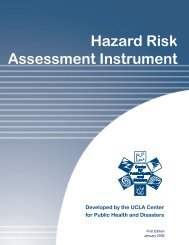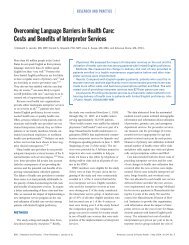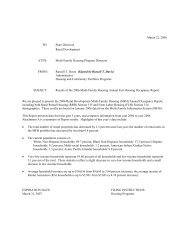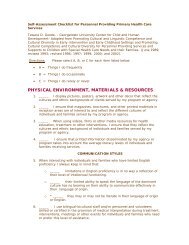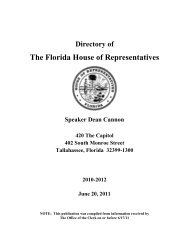Guide to Understanding Florida's FQHCs and 330 Expansion ...
Guide to Understanding Florida's FQHCs and 330 Expansion ...
Guide to Understanding Florida's FQHCs and 330 Expansion ...
You also want an ePaper? Increase the reach of your titles
YUMPU automatically turns print PDFs into web optimized ePapers that Google loves.
array of “Enabling Services” designed <strong>to</strong> reduce the barriers <strong>to</strong> healthcare that are experienced by<br />
many CHC patients. Language services, transportation, outreach, case management, education <strong>and</strong><br />
other support services make healthcare more accessible for those who need them most. Unlike many<br />
healthcare providers, <strong>FQHCs</strong> cannot be selective about who they serve. They are required <strong>to</strong> serve<br />
everyone - women, men, children, young, old, black, white, Hispanic - everyone.<br />
In 2004, Florida’s <strong>FQHCs</strong> saw 588,288 patients with almost 2.4 million medical, dental <strong>and</strong><br />
mental health encounters at 172 sites across the state in some of Florida’s most rural <strong>and</strong> inner city<br />
communities. Florida <strong>FQHCs</strong> employ 3,568 people including physicians, dentists, nurse<br />
practitioners, physician assistants, nurses, medical assistants, pharmacists, case managers, outreach<br />
workers <strong>and</strong> other support staff. Table 3 illustrates the <strong>to</strong>tal number of patient encounters delivered<br />
by Florida <strong>FQHCs</strong> by category <strong>and</strong> number of visits (encounters) per patient.<br />
Table 3: Florida FQHC Patient Encounters by Type, Number <strong>and</strong> Ratio<br />
Type of Patient<br />
Encounter<br />
# of<br />
Encounters<br />
Average # of Encounters<br />
per Patient<br />
Who Are FQHC Patients<br />
Medical 1,845,136 3.28<br />
Dental 205,355 2.37<br />
Mental Health <strong>and</strong><br />
Substance Abuse 90,334 5.09<br />
Enabling 190,921 2.27<br />
Total Encounters 2,351,108<br />
Source: Florida Uniform Data System (UDS) 2004<br />
Many FQHC patients are economically disadvantaged, uninsured <strong>and</strong> face substantial social<br />
challenges <strong>and</strong> barriers <strong>to</strong> affordable healthcare. The lack of financial resources <strong>and</strong> health<br />
insurance places major limitations on the availability of healthcare services for many people.<br />
<strong>FQHCs</strong> are required by federal regulations <strong>to</strong> serve medically underserved areas or populations<br />
(MUAs/MUPs) where access <strong>to</strong> healthcare is particularly difficult for residents. Many CHC patients<br />
work in low paying jobs with few, if any, benefits <strong>and</strong> cannot afford <strong>to</strong> miss an afternoon of work <strong>to</strong><br />
see a clinician. Barriers <strong>to</strong> healthcare access are frequently compounded by a lack of reliable<br />
transportation. Many Florida CHCs make arrangements for transportation <strong>to</strong> <strong>and</strong> from health<br />
center sites, <strong>and</strong> <strong>to</strong> other providers who agree <strong>to</strong> provide additional services. Most physicians’<br />
offices are open between the hours of nine <strong>and</strong> five. When working people (particularly low paid<br />
hourly workers) are sick, they often have <strong>to</strong> choose between risking the loss of needed employment,<br />
forgoing care for themselves <strong>and</strong> their loved ones or turning up at the emergency room after work<br />
hours. None of these options are good ones. Many Florida Community Health Centers offer evening<br />
<strong>and</strong> weekend hours making services more accessible <strong>to</strong> the populations they serve.<br />
Nearly 10% of Florida FQHC patients are privately insured <strong>and</strong> have options about where <strong>to</strong> go for<br />
healthcare. They choose <strong>to</strong> use <strong>FQHCs</strong> because of the number <strong>and</strong> scope of services they offer, the<br />
quality of care <strong>and</strong> the enabling services that make healthcare more accessible <strong>to</strong> them. Table 4<br />
illustrates selected demographics for Florida FQHC patients.<br />
<strong>Underst<strong>and</strong>ing</strong> Florida <strong>FQHCs</strong> Copyright 2006 Page 7 ©


